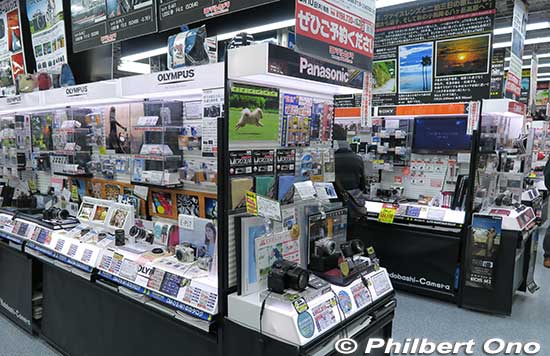
by Philbert Ono
The Japanese camera industry’s struggles have gotten worse with the pandemic in 2020. The coronavirus resulting in stay-at-home requests, travel bans, and the cancellation of events (including the Tokyo 2020 Olympics) give people fewer reasons to take pictures and fewer reasons to buy a new camera. Worldwide camera sales for Jan. to May 2020 is only 50.4% of sales in the same period in 2019.
With the prominence of smartphones, all camera makers have been facing shrinking sales of digital cameras. In 2010, worldwide camera sales peaked at 121.46 million units. In 2019, it shrank to one-eighth the peak with only 15.21 million units.
Even Nikon and Canon are seeing much lower sales in 2020 than ever before. Nikon saw red ink for the first time, for the year ending in March 2020. Sales of its D-SLRs and lenses are not doing well. Although Nikon has greatly trimmed its workforce at its factories in Thailand and Laos, it still expects the red ink to continue until 2021. Their new Nikon D6 flagship D-SLR introduced in May 2020 won’t be enough to put them in the black.
Experts say that Nikon and Canon were late in the game in the mirrorless camera market. Fearing that mirrorless cameras would eat into their D-SLR camera sales, they delayed entering the full-frame mirrorless camera market until 2018 when mirrorless camera sales in Japan already exceeded D-SLR sales. Sony had already marketed the world’s first full-frame mirrorless camera “α7” in 2013.
Sony continues to lead the mirrorless camera market. In 2019, Sony sold 1.65 million mirrorless cameras in Japan, Canon 940,000, and Nikon only 280,000 units.
Sony had no fears about mirrorless cameras affecting D-SLR sales since it had no D-SLRs. So it just took the mirrorless camera ball and ran with it all by itself. It has been an amazing run (for the money too). Congratulations to Sony.
Of course, Canon is not standing idly by. It now has the EOS R5 that came out in July 2020. It has been well received as a full-frame mirrorless camera featuring 8K video. The specs exceed Sony’s α9.
Although Sony and Canon have diverse product lines to maintain profitability, Nikon is on shaky ground. Hopefully, it will survive. A camera industry without Nikon is almost unthinkable.
We have already seen too many mid-tier camera companies disappear or downsize. Ricoh reduced its camera division (which had earlier merged with Pentax) in 2017, and Casio totally withdrew from the compact camera business in May 2018.
The latest shock came on June 24, 2020 when Olympus Corporation announced that it would sell off its historic camera division (founded in 1936) to Japan Industrial Partners, a Japanese investment fund. The final contract will be signed in Sept. 2020 and the sale will be completed by the end of 2020. Olympus will continue as a medical equipment maker.
Another shock was Asahi Camera, one of Japan’s longtime leading camera magazines, ceasing publication with its July 2020 issue. After 94 years in print, this venerable monthly magazine has retired due to declining readership and ad revenue.
Also, in recent years, many authorized camera repair centers in Japan have closed. The major camera makers now have repair centers only in Tokyo or only in the largest cities. People in other areas will need to use mail-in repair services.
As someone who has witnessed the exciting rise and depressing and continuing fall of conventional digital cameras, I find all this really sad. But it only reflects the ever-changing times. On the bright side, photography continues to be a massively popular and important activity and photos are essential in our daily lives. More people than ever before are taking pictures (and videos) and making money from it. And anybody can take pictures. We’ve come a long, long way since 20 years ago. But it’s a fact that image quality is still better with conventional digital cameras than with mobile phones. There’s still hope for the camera industry.





